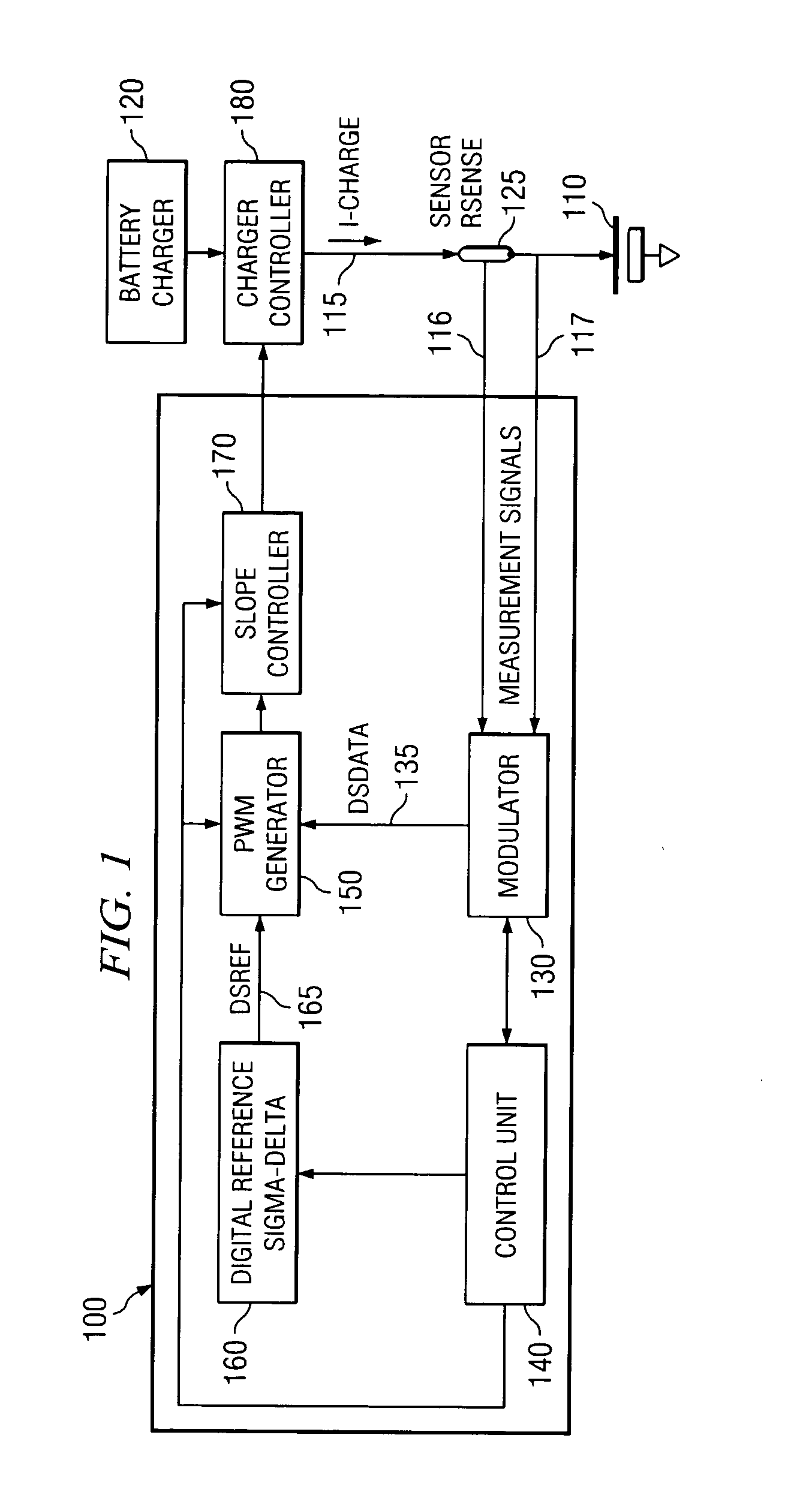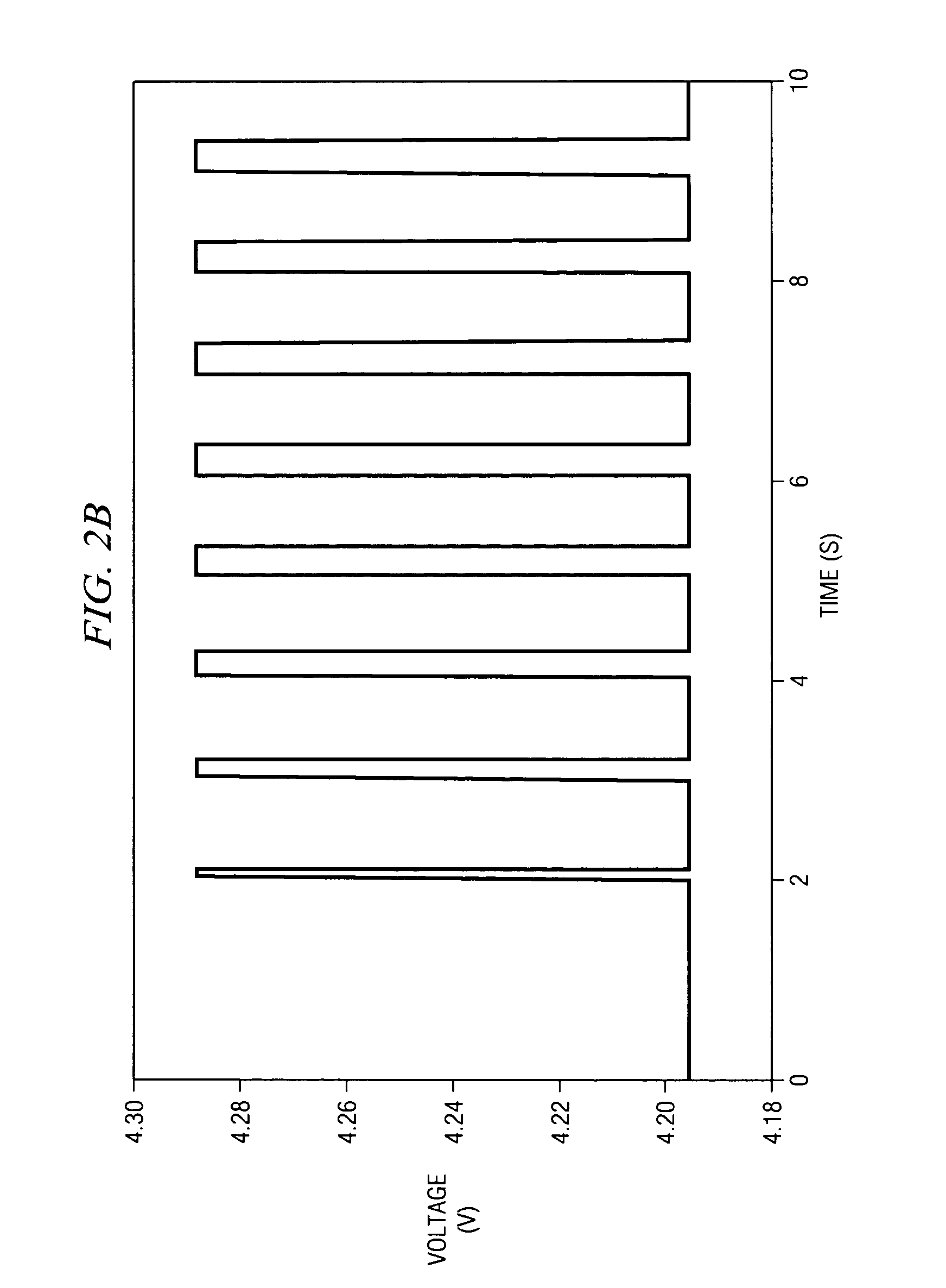Battery charger interface architecture suitable for digital process
a technology of battery chargers and interfaces, applied in electric power, electric vehicles, transportation and packaging, etc., can solve the problems of increasing the complexity of the software that controls the analog battery charger, the interface of typical analog battery chargers may not be suitable for low-voltage processes, and the heat dissipation scheme of analog battery chargers
- Summary
- Abstract
- Description
- Claims
- Application Information
AI Technical Summary
Benefits of technology
Problems solved by technology
Method used
Image
Examples
Embodiment Construction
FIG. 1 illustrates an exemplary architecture of a battery charger interface 100 coupled to a battery 110, which is not a part of the battery charger interface 100. The battery 110 is coupled to a charger controller 180 via a link 115. The charger controller 180 can be any device configured to control the output of the battery charger 120, such as a transistor. The link 115 includes a sensor Rsense 125. The sensor Rsense 125 is configured to provide measurement signal for the battery current. The sensor Rsense 125 can be a resistor. The charger controller 180 is coupled to a battery charger 120. A sigma-delta modulator (“modulator”) 130 is coupled to the battery 110 via a link 116 and the sensor Rsense 125. The modulator 130 is also coupled to the battery 110 via an additional link 117. The link 117 can be used to measure the voltage of the battery 110. The modulator 130 receives the analog measurement signals from the battery 110 via the links 116 and 117. The modulator 130 can be a...
PUM
 Login to View More
Login to View More Abstract
Description
Claims
Application Information
 Login to View More
Login to View More - R&D
- Intellectual Property
- Life Sciences
- Materials
- Tech Scout
- Unparalleled Data Quality
- Higher Quality Content
- 60% Fewer Hallucinations
Browse by: Latest US Patents, China's latest patents, Technical Efficacy Thesaurus, Application Domain, Technology Topic, Popular Technical Reports.
© 2025 PatSnap. All rights reserved.Legal|Privacy policy|Modern Slavery Act Transparency Statement|Sitemap|About US| Contact US: help@patsnap.com



